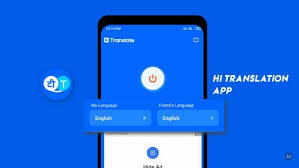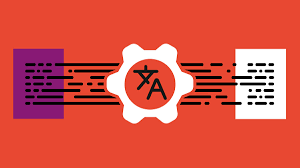
The Role of AI in Language Translation Apps
Introduction
In an increasingly connected world, breaking down language barriers is more important than ever. Travelers, businesses, and everyday users need quick, reliable translations to communicate globally. AI-powered translation apps have stepped in to meet this demand. By using machine learning and neural networks, these apps make translating languages faster and more accurate.
These tools now support real-time language translation, helping individuals and companies communicate across borders instantly. The market for AI translation technology is booming, driven by the demand for on-the-go, efficient solutions.
What Are AI-Powered Translation Apps?
AI-powered translation apps are mobile or web-based applications that use artificial intelligence to convert text or speech from one language to another. Unlike traditional dictionary tools, these apps analyze entire sentences using machine learning and natural language processing (NLP).
Popular examples include Google Translate, DeepL, Microsoft Translator, and iTranslate. These platforms handle text, voice, and even visual input, enabling users to type, speak, or point their camera at foreign text for instant, intelligent translations.
Thanks to AI, these translations feel more natural and contextually accurate than ever, with some apps even customizing vocabulary and tone to fit user preferences.
How AI Enhances Language Translation
Neural Machine Translation (NMT)
Most AI translators today rely on Neural Machine Translation (NMT). This advanced technology replaces older phrase-based systems by using deep learning to translate entire sentences in one go. NMT captures grammar and contextual relationships, producing translations that are more fluent and human-like.
Contextual Understanding
AI doesn’t just translate words—it interprets meaning. Contextual translation allows AI systems to consider idioms, slang, tone, and cultural nuances. For example, instead of translating “kick the bucket” literally, AI interprets it as “to die,” providing a more accurate and culturally relevant translation.
Some platforms also allow businesses to fine-tune their translations using specific style guides or terminology, ensuring brand consistency across languages.
Real-Time Translation
Real-time language translation is one of the most powerful features of modern AI apps. With voice-to-voice translation capabilities, users can have seamless multilingual conversations. Apps like Google Translate offer live conversation modes, while others use your phone’s camera to translate text on signs, menus, or documents instantly.
This real-time functionality relies on a combination of speech recognition, neural translation, and speech synthesis, all powered by AI.
Benefits of AI in Translation Apps
AI in translation technology offers numerous advantages for both individuals and businesses:
- Speed and Convenience – Translations are generated within seconds, streamlining communication and international operations.
- High Accuracy and Fluency – AI-powered models produce natural-sounding translations with consistent grammar and context.
- 24/7 Accessibility – These apps work around the clock, even offering offline functionality in some cases.
- Scalability – Businesses can translate high volumes of content across multiple languages simultaneously.
- Cost Efficiency – Automating translation reduces the need for human translators for routine tasks, saving money.
- Continuous Learning – AI systems improve with usage, enhancing accuracy over time based on user feedback and new data.
Challenges and Limitations
While AI translation apps are incredibly useful, they aren’t without limitations:
- Loss of Nuance – Idioms, sarcasm, humor, and cultural subtleties are still challenging for AI to interpret accurately.
- Language Pair Limitations – Translations for less commonly spoken or low-resource languages may be less reliable.
- Privacy Concerns – Many apps process translations via cloud servers, raising data privacy issues.
- Data Requirements – Training neural machine translation models requires vast amounts of high-quality data.
- Bias and Errors – AI can inherit biases from training data or make factual errors, particularly in sensitive content.
- Need for Human Oversight – Human translators are still essential for reviewing and refining translations, especially in legal, medical, or technical fields.
Use Cases Across Industries
AI translation apps are already transforming how various industries communicate globally:
- Travel & Tourism – Tourists use AI apps to translate signs, menus, and conversations, making travel easier and more immersive.
- E-Commerce & Marketing – Businesses translate product listings, customer reviews, and marketing copy to reach global audiences.
- Customer Support – AI enables multilingual chatbots and support agents to handle customer inquiries in real time.
- Media & Entertainment – Subtitles, dubbing scripts, and social media content are translated quickly and accurately for global distribution.
- Legal & Finance – AI helps process large volumes of legal and financial documents, accelerating workflows.
- Healthcare & Education – Hospitals and schools use AI to communicate effectively with patients and students who speak different languages.
The Future of AI in Language Translation
The future of AI in language translation looks promising, with exciting developments on the horizon:
- Generative AI Models – Large language models (LLMs) are being customized for translation tasks, improving performance on long-form content.
- Adaptive and Personalized Translation – AI tools are learning to adjust style and vocabulary based on individual user preferences.
- On-Device Translation – Advances in mobile hardware will allow powerful translation features to work offline, improving privacy and accessibility.
- Support for Rare Languages – AI is starting to support low-resource languages using innovative techniques like zero-shot learning.
- Multi-Modal Translation – Future apps will combine speech, text, and visual inputs, enabling translations in real-time across augmented and virtual reality environments.
Conclusion
AI-powered translation apps are revolutionizing global communication. By leveraging neural machine translation, contextual understanding, and real-time language translation, these tools make it easier than ever to connect across cultures and languages.
While challenges like nuance and data privacy remain, the benefits—speed, accuracy, scalability, and accessibility—make AI translation apps an essential tool for anyone operating in a global context. For tech readers and app developers, integrating AI translation technology into your products isn’t just a trend—it’s a game-changing opportunity to reach a wider, more diverse audience.
Stay connected with us on HERE AND NOW AI & on

